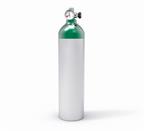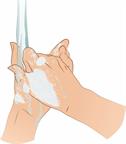Home Oxygen Use, Pediatric
When a medical condition keeps your child from getting enough oxygen, home oxygen use may be prescribed once your child is medically stable. Oxygen treatment requires extra training. You will be told:
Home oxygen can be given through:
A nasal cannula. This device or tube goes in the nostrils.
A breathing tube (tracheostomy tube) that is surgically placed in the windpipe.
A mask. This covers the nose and mouth or covers the tracheostomy tube.
These devices have tubing that connects to an oxygen source, such as:
A tank. Tanks hold oxygen in gas form. It must be replaced when the oxygen is used up.
A liquid oxygen device. This holds oxygen in liquid form. It must be replaced when the oxygen is used up.
An oxygen concentrator machine. This machine uses electricity to filter oxygen in the room. You will need a backup oxygen tank in case the power goes out.
What are the risks?
Your child's health care provider will talk with you about risks. These may include:
Strangulation if the tubing gets wrapped around the neck.
Fire if the oxygen is exposed to a heat source, flame, or spark.
Injury to the skin if liquid oxygen touches the skin. Pressure sores may occur if the oxygen tubing presses on the skin.
Damage to the lungs or other organs from getting too little or too much oxygen.
Supplies needed:

Your child will need:
A mask, nasal cannula, or supplies needed for a tracheostomy.
An oxygen tank, a liquid oxygen device, or an oxygen concentrator.
Your child's health care provider may recommend:
A humidifier that adds moisture to the oxygen.
A pulse oximeter that measures the percentage of oxygen in the blood.
An apnea monitor that tracks heart rate and breathing. It will sound an alarm if breathing stops.
How to use oxygen

You will be shown how to use the oxygen device and how to give oxygen. Instructions may look something like this:
Wash your hands with soap and water for at least 20 seconds before touching your child.
- Turn on the oxygen. Make sure the oxygen unit is working right. To do this:
Place one end of the oxygen tubing into the port on the oxygen source. Connect the other end to the nasal cannula or mask.
Turn the liter-flow setting on the machine to the level you were told.
Get your child comfortable. Try giving your child a toy to play with while you place the mask or cannula.
Place the nasal cannula in your child's nose or the mask over their mouth and nose or tracheostomy tube. Secure these items as told.
Turn off the oxygen when it is not in use.
How to clean and care for the oxygen supplies
Clean or replace the oxygen equipment and supplies as told. If you have questions, ask the medical device company that supplies the equipment.
Safety tips
Fire safety tips

-
Keep the oxygen and oxygen supplies at least 6 ft (2 m) away from heat sources, flames, and sparks at all times.
-
Do not allow smoking near the oxygen. Put up "no smoking" signs in your home.
-
Do not use materials that can burn (are flammable) while oxygen is in use. This includes:
-
Keep a fire extinguisher nearby. Tell your fire department that you have oxygen in your home.
-
Test your home smoke detectors often.
Traveling
-
Secure the oxygen tank in the vehicle so it does not move. Follow instructions from the medical device company about how to safely secure the tank.
-
Have enough oxygen for the amount of time your child will be away from home.
-
If you plan to travel by public transportation, such as airplane, train, bus, or boat, contact the company to arrange a portable oxygen delivery system. You may need documents from a health care provider and medical device company before travel.
General safety tips
-
Keep extra supplies on hand, including extra tubing and an extra cannula or mask.
-
If your child uses an oxygen cylinder, keep it in a stand or secure it to an object that will not move.
-
If your child uses liquid oxygen, always keep the container upright.
- If your child uses an oxygen concentrator:
Tell your electric company. Make sure you have priority service if your power goes out.
Avoid using extension cords.
Keep extra backup oxygen tanks.
-
Have access to a phone in case of an emergency. Keep emergency numbers handy, such as your child's health care provider and the medical supply company.
-
Talk to the health care provider about strangulation concerns and how to keep your child from becoming tangled in tubing.
Follow these instructions at home:
-
Give oxygen only as told by the health care provider.
-
Know how and when to order a refill of oxygen. Plan for holidays when you may not be able to get a prescription filled.
-
Use water-based lubricants on your child's lips or nostrils. Do not use oil-based products like petroleum jelly.
-
Ask the health care provider what can prevent skin irritation.
Contact a health care provider if:
-
Your child seems more tired than normal and has little energy.
-
Your child has dry, irritated skin.
-
Your child has nosebleeds.
-
Your child is restless, irritable, or anxious.
-
Your child is not eating or sleeping well.
-
Your child is having trouble breathing.
-
Your child is limp or weak.
-
Your child is not acting like themselves.
-
Your child has gray or bluish lips, gums, fingernails, or eyes.
These symptoms may be an emergency. Do not wait to see if the symptoms will go away. Get help right away. Call 911.
This information is not intended to replace advice given to you by your health care provider. Make sure you discuss any questions you have with your health care provider.
 Your child will need:
Your child will need: You will be shown how to use the oxygen device and how to give oxygen. Instructions may look something like this:
You will be shown how to use the oxygen device and how to give oxygen. Instructions may look something like this: